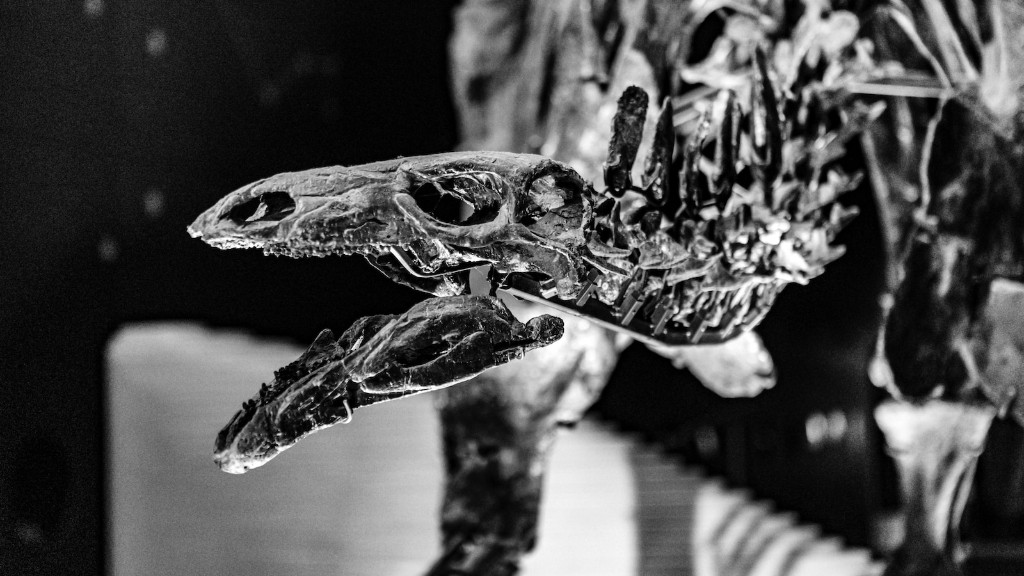The Thrilling Presence of Dinosaurs in Jurassic Park
Welcome to the mesmerizing world of Jurassic Park, where the magnificent creatures of the past come alive on the big screen. In this thrilling adventure, audiences are transported to a time long gone, when gigantic dinosaurs once roamed the Earth. The question on every fan’s mind is: How long do these awe-inspiring beasts grace the screen?
Awe-Inspiring Moments with Dinosaurs
For fans seeking a prehistoric rush, Jurassic Park offers an abundance of dinosaur-filled moments. From the majestic Tyrannosaurus rex to the agile Velociraptors, these creatures captivate audiences with their sheer size and power. Each appearance on-screen is carefully crafted to evoke a range of emotions, from wonder and excitement to fear and awe.
The film-makers behind Jurassic Park masterfully blend state-of-the-art special effects with compelling storytelling to ensure that dinosaurs hold the spotlight. Their abilities to create realistic dinosaurs, using a combination of animatronics and CGI, make these ancient creatures truly come to life. As a result, every second of dinosaur presence is a feast for the eyes, leaving viewers on the edge of their seats.
In Jurassic Park, dinosaurs are not merely background elements; they are integral to the plot and drive the narrative forward. Whether it’s the iconic scene with the T. rex breaking free from its enclosure or the intense moments of suspense as the Raptors hunt down their human prey, the dinosaurs of Jurassic Park dominate the screen, leaving a lasting impact on the audience.
Lengthy and Memorable Encounters
To say that the dinosaurs in Jurassic Park have substantial screen time would be an understatement. These prehistoric creatures are given prolonged and memorable sequences that allow viewers to fully immerse themselves in their presence. With every roar, every chase, and every bite, the dinosaurs become more than just special effects – they become characters in their own right.
In scenes such as the awe-inspiring first appearance of the Brachiosaurus or the hair-raising encounter with the Dilophosaurus, audiences are given ample time to appreciate the magnitude and beauty of these creatures. These moments, carefully constructed by the filmmakers, stay with viewers long after the credits roll.
Moreover, the on-screen time of the dinosaurs in Jurassic Park extends beyond individual encounters. Throughout the film, there is a constant sense of their looming presence, even in moments when they are not directly visible. This builds suspense and anticipation, heightening the impact of their eventual appearances.
An Unforgettable Cinematic Experience
The dinosaurs in Jurassic Park are not just visual spectacles; they are vehicles for emotional storytelling. By incorporating these ancient creatures into the fabric of the film, the creators tap into our collective fascination with dinosaurs and evoke a sense of wonder that transcends the boundaries of the screen.
Through the lens of Jurassic Park, we can experience the thrill of encountering creatures that vanished millions of years ago. The dinosaurs become symbols of our curiosity and the mysteries of the natural world. Their presence on-screen serves as a reminder of our place in the vastness of time and the incredible diversity of life that has existed and continues to exist on Earth.
Jurassic Park invites us on a journey where we not only witness but also participate in the awe-inspiring encounters with dinosaurs. Each second they command the screen reaffirms our fervent desire to explore, discover, and unlock the secrets of our planet’s past.
Section 2
Start of section 2 Lorem ipsum dolor sit amet, consectetur adipiscing elit. Nam ullamcorper ut eros eget condimentum. Suspendisse potenti. Aliquam at accumsan neque. Pellentesque tristique augue id elit efficitur, in tempus lectus rhoncus. Donec tristique dapibus quam, non congue libero rutrum id. Morbi sapien velit, pellentesque a lacus a, dignissim bibendum neque. Phasellus volutpat erat non erat tempus varius. Phasellus aliquam tincidunt tellus, sit amet eleifend est gravida consequat.
Aenean faucibus ullamcorper odio, porta tristique elit suscipit a. Praesent in nisl id tortor sollicitudin consequat. Donec eleifend felis nibh, vel interdum justo blandit non. Fusce sit amet arcu pretium, sollicitudin purus eu, rutrum mi. Nulla facilisi. Curabitur hendrerit risus quis scelerisque porttitor. Suspendisse eget risus odio. Fusce interdum dui a congue pretium. Nunc eu ligula elit.
Section 3
Start of section 3 Vestibulum a mi ut purus dictum rhoncus. Vestibulum dapibus, augue eu varius ultricies, felis dui laoreet lectus, ac varius tellus urna sed nulla. Aenean et erat at nibh tincidunt finibus. Nulla facilisi. Maecenas libero arcu, cursus ac drone. Sed vulputate lobortis diam, sed malesuada magna auctor ac.
Curabitur pulvinar, odio sed feugiat dapibus, lacus ligula suscipit est, in tincidunt mauris lacus id neque. Donec in blandit nisi, at vestibulum elit. Integer faucibus, ligula quis tempor blandit, tortor sapien vulputate justo, sit amet iaculis lectus leo ornare metus. Praesent dapibus nulla nec erat suscipit, ut efficitur lectus sollicitudin. Quisque sed eleifend orci, in accumsan lacus.
Section 4
Start of section 4 Nulla ullamcorper est ut iaculis tristique. Morbi posuere eros in condimentum commodo. Pellentesque habitant morbi tristique senectus et netus et malesuada fames ac turpis egestas. Nam hendrerit, dui non ultrices auctor, nisi orci ullamcorper mauris, quis vulputate quam orci nec lectus. Morbi aliquam gravida neque, sit amet consequat leo sodales sed.
Phasellus vitae bibendum nulla, pharetra tristique felis. In purus ligula, posuere at ultricies eget, aliquam id ante. Morbi et purus pe




